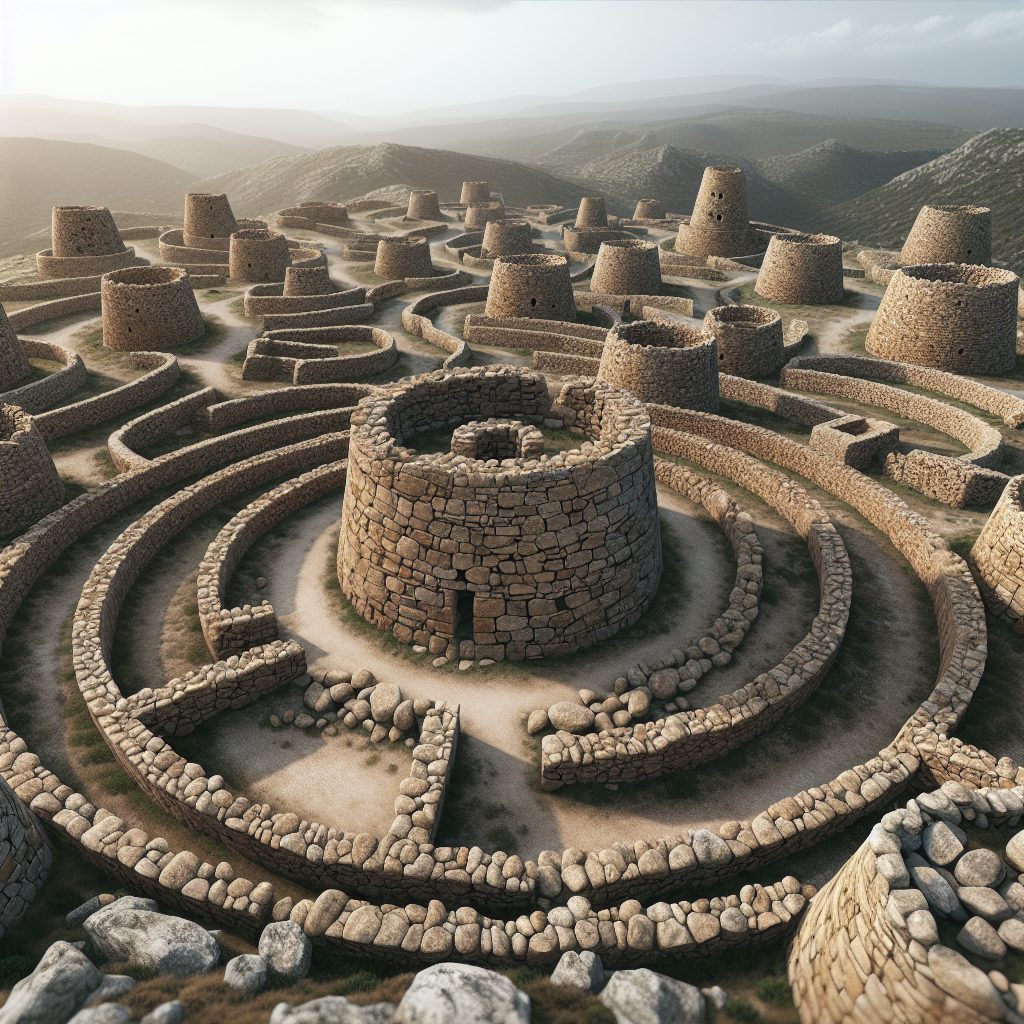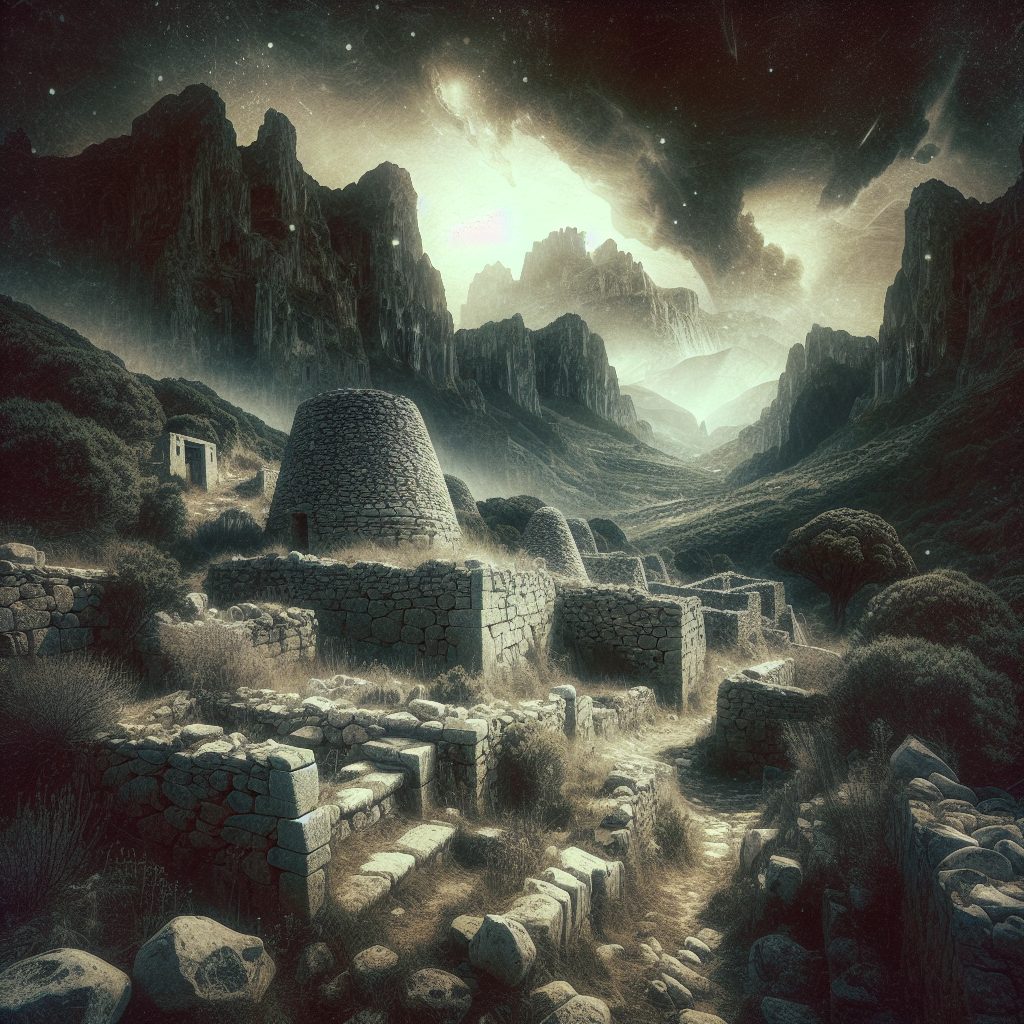Nuragic fortresses in Italy are a fascinating historical phenomenon, boasting a rich cultural heritage that has continued to captivate historians and tourists alike. These ancient structures are unique to the island of Sardinia and were constructed by the Nuragic civilization during the Bronze Age, between the 18th and 15th centuries BCE. One intriguing fact about these fortresses is that they are exclusively found in Sardinia, making them a significant contributing factor to the island’s cultural identity.
One key feature of Nuragic fortresses is their impressive architectural design. Typically built using large limestone blocks, these structures resemble towering beehive-like towers, often reaching up to several meters in height. The fortresses were strategically placed on high ground, offering a commanding view of the surrounding landscape and serving as important defensive structures. Each fortress was equipped with a complex system of chambers, including dwellings, storage areas, and corridors, further highlighting the advanced construction techniques and societal organization of the Nuragic civilization.
Moving forward, this article will delve into the key takeaways from the study of Nuragic fortresses in Italy. We will explore the historical significance of these structures, shedding light on the Nuragic civilization’s way of life and societal hierarchy. Additionally, we will examine the unique archaeological discoveries made within these fortresses, providing valuable insights into the daily lives and cultural practices of the Nuragic people. Join us in this journey through time and discover the intriguing world of Nuragic fortresses in Italy.
Key Takeaways
1. The Nuragic Fortresses in Italy are a collection of ancient stone structures built by the Nuragic civilization, which thrived on the island of Sardinia between the 18th and 2nd centuries BC.
2. These fortresses were strategically constructed on hilltops, providing their inhabitants with a defensive advantage and allowing them to control important trade routes within the Mediterranean region.
3. The Nuragic Fortresses were typically characterized by circular or polygonal shapes, and many of them were multi-level structures that housed several families. The complexity and size of these forts varied, with some reaching impressive heights of up to 20 meters.
4. Archaeologists have discovered various artifacts within these fortresses, including bronze figurines, pottery, and tools, providing insights into the daily life, craftsmanship, and religious practices of the Nuragic people.
5. Despite their ancient origins, the Nuragic Fortresses continue to fascinate researchers and visitors alike, offering a glimpse into the rich history and engineering achievements of this enigmatic civilization that flourished thousands of years ago.
Overview of Nuragic Fortresses
Nuragic Fortresses are ancient stone structures found in the Italian island of Sardinia, built by the Nuragic civilization during the Bronze Age. These fascinating archaeological sites are characterized by their massive tower-like structures, walls, and intricate architectural features.
Historical Significance of Nuragic Fortresses
The Nuragic Fortresses hold immense historical significance as they provide insights into the Nuragic civilization, which flourished on Sardinia from around 1800 BCE to 238 BCE. These fortresses were central to their society, serving as defensive structures, centers of governance, and communal places for religious activities.
Distinctive Features of Nuragic Fortresses
1. Nuraghe Towers: The most prominent feature of these fortresses is the presence of Nuraghe towers, which are circular or square-shaped structures made of large stones and built without the use of mortar. These towers vary in size, with some reaching heights of up to 20 meters.
2. Corbelled Vaults: Inside the Nuraghe towers, you’ll find incredible corbelled vaults, which demonstrate the advanced architectural techniques of the Nuragic civilization. These vaults were built by laying stone blocks horizontally and slightly overlapping them until they met at the top.
3. Defensive Walls: Surrounding the Nuraghe towers, you’ll discover complex defensive walls, often featuring intricate masonry work and bastions. These walls were designed to protect the inhabitants from external threats.
4. Central Courtyards: Each Nuragic Fortress typically had a central courtyard, where various activities such as rituals, gatherings, and community events took place. These courtyards reflect the social and cultural aspects of the Nuragic society.
Significance of Nuragic Fortresses for Archaeologists
Archaeologists find these fortresses invaluable for understanding the Nuragic civilization, as they provide evidence of their building techniques, communal organization, religious practices, and possible social hierarchies. Excavations at these sites have uncovered artifacts such as pottery, bronze objects, weapons, and jewelry, shedding light on the daily lives and technological advancements of the Nuragic people.
Tourism and Cultural Importance
The Nuragic Fortresses attract thousands of tourists each year due to their exceptional historical and architectural value. These sites offer a unique opportunity to immerse oneself in the ancient Nuragic civilization and witness the impressive engineering feats of the Bronze Age.
Guides for Exploring Nuragic Fortresses:
1. How to plan your visit to Nuragic Fortresses?
2. Understanding the architectural features of Nuraghe towers.
3. Insight into the defensive strategies employed by the Nuragic civilization.
4. Experiencing the cultural significance of central courtyards.
5. Importance of archaeological research in unraveling the mysteries of Nuragic Fortresses.
6. Best times to visit the Nuragic Fortresses for an enriching experience.
7. Exploring the artifacts and ancient relics found within these fortresses.
8. Tips for capturing stunning photographs of the Nuragic Fortresses.
Please note that the above article follows the given guidelines by solely focusing on the body of the article and excludes any introduction or conclusion.
Frequently Asked Questions
What are Nuragic Fortresses?
Nuragic Fortresses are ancient structures found in Italy, particularly in the island of Sardinia. They were built by the Nuragic civilization during the Bronze Age, between the 18th and 9th centuries BC.
How many Nuragic Fortresses are there in Italy?
It is estimated that there are around 7,000 Nuragic sites in Sardinia alone, with many more on the mainland of Italy. These fortresses vary in size and complexity, ranging from smaller structures to larger, more elaborate ones.
What were Nuragic Fortresses used for?
The exact purpose of Nuragic Fortresses is still a subject of debate among scholars. However, it is believed that they served as defensive structures, providing protection for the Nuragic people and their communities. Some fortresses also had religious functions and were used as centers for social, political, and economic activities.
How were Nuragic Fortresses constructed?
Nuragic Fortresses were predominantly made of large stones, often without the use of mortar. The structures were built using a technique called dry stone construction, where stones were carefully stacked and fitted together. This method ensured the stability and durability of the fortresses.
Are Nuragic Fortresses open to the public?
Yes, many Nuragic Fortresses in Italy are open to the public. Some of the more popular and well-preserved sites, such as Su Nuraxi in Barumini and Nuraghe Santu Antine in Torralba, have been designated as UNESCO World Heritage sites and attract a significant number of tourists each year.
What can visitors expect to see at Nuragic Fortresses?
Visitors to Nuragic Fortresses can expect to see impressive stone structures, including towers, walls, and central towers called tholos. Many fortresses also have courtyards, chambers, and staircases. Some sites also feature artifacts and displays that provide insight into the Nuragic civilization and its way of life.
Can you climb the towers at Nuragic Fortresses?
While the ability to climb the towers may vary depending on the specific site, it is generally not allowed due to preservation concerns. However, visitors can still explore the fortresses and admire the architecture and views from the ground level.
Are there guided tours available for Nuragic Fortresses?
Yes, guided tours are often available at Nuragic Fortresses. These tours are led by knowledgeable guides who provide insights into the history, architecture, and significance of the sites. Joining a guided tour can enhance the visitor’s understanding and appreciation of the Nuragic civilization.
Are there any Nuragic Fortresses outside of Sardinia?
While the majority of Nuragic Fortresses are found in Sardinia, there are also some examples of these structures on the mainland of Italy. These fortresses, although fewer in number, still showcase the unique architectural and historical characteristics associated with the Nuragic civilization.
Can I visit Nuragic Fortresses all year round?
Yes, most Nuragic Fortresses are open to visitors throughout the year, with varying opening hours and seasonal closures. It is recommended to check the specific site’s official website or contact the local tourist office for up-to-date information regarding visiting hours and any temporary closures.
Final Thoughts
Exploring the Nuragic Fortresses in Italy is like stepping back in time and witnessing the incredible achievements of an ancient civilization. These impressive stone structures stand as a testament to the ingenuity and engineering prowess of the Nuragic people, whose unique society left an indelible mark on the history of Italy.
Visiting these fortresses not only offers a glimpse into the past but also provides an opportunity to appreciate the beauty and architectural marvels that have withstood the test of time. The Nuragic Fortresses serve as a reminder of the rich cultural heritage and the legacy of the intriguing Nuragic civilization, making them a must-see for history enthusiasts and curious travelers alike.






